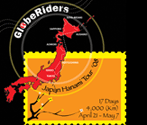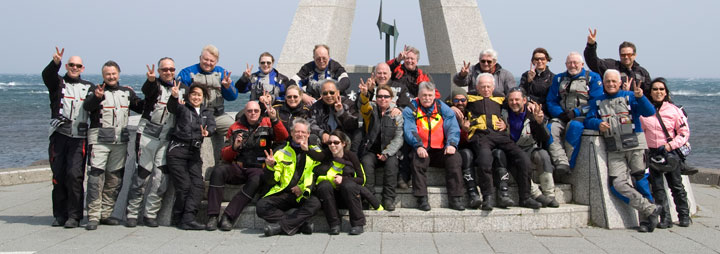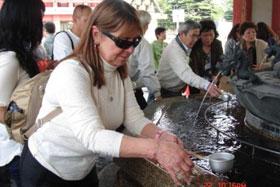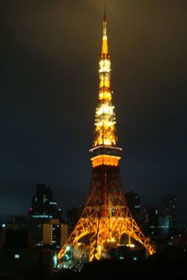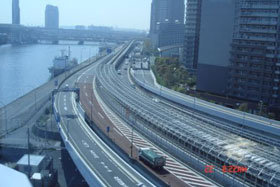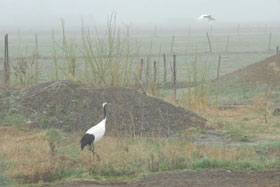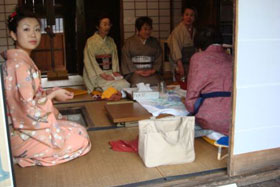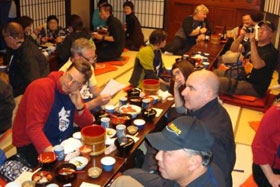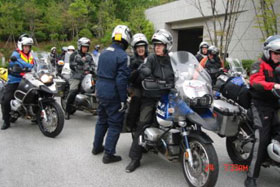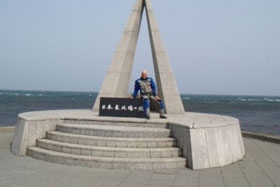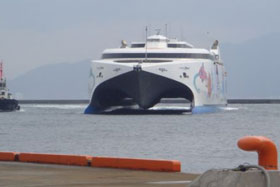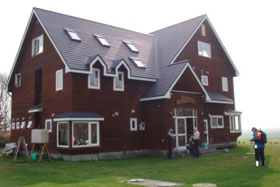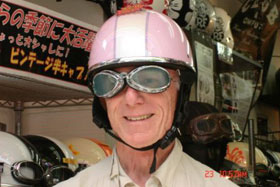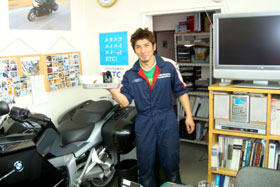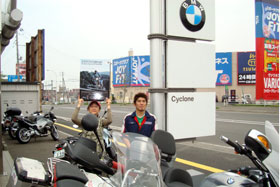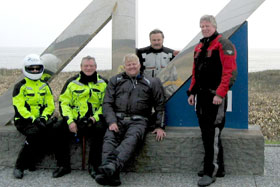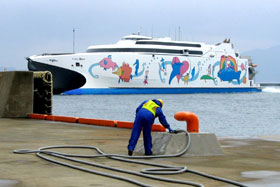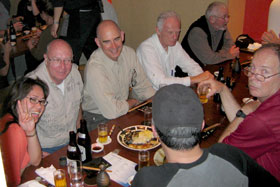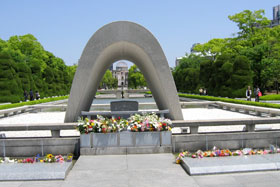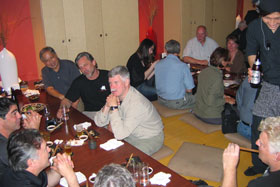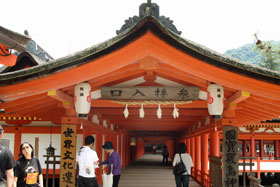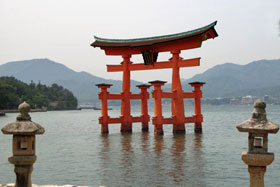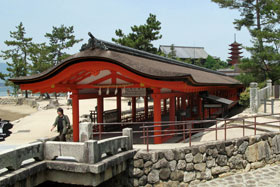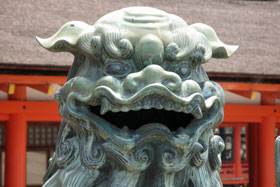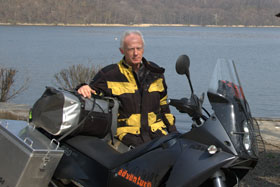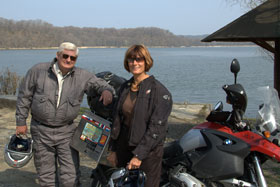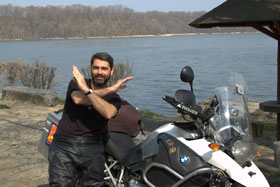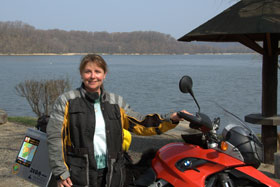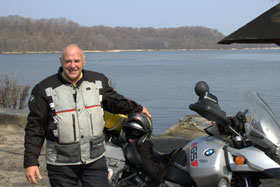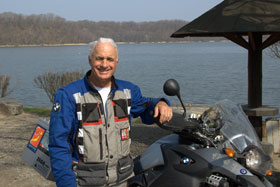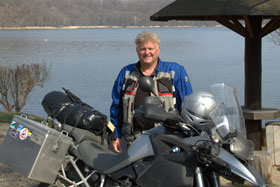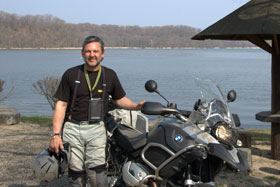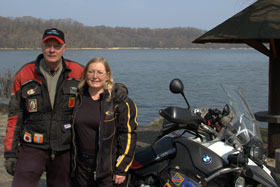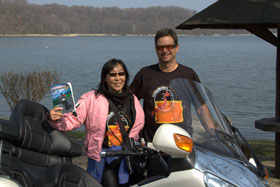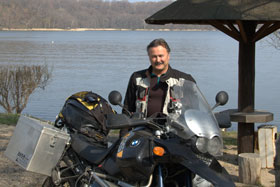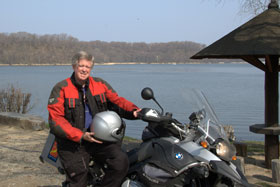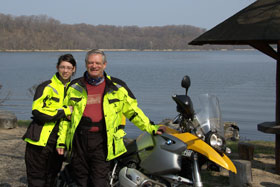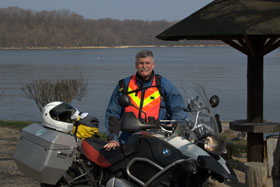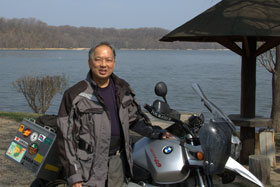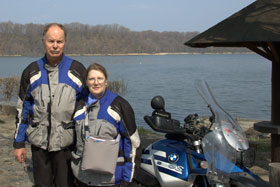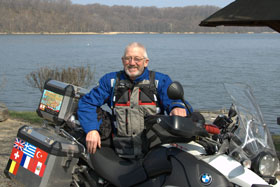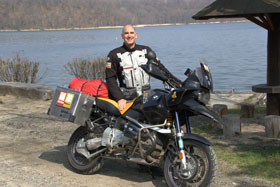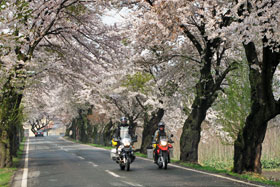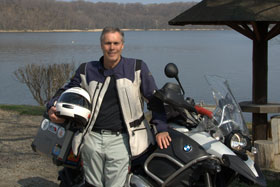Our Japan Hanami Tour is over.
In fact, as I write this final story, I am already in Beijing, on Day Two of the World Tour, but that’s another adventure for another Live!Journal.
Japan was the first GlobeRiders tour that I pretty much organized and executed on my own. Frankly, I wasn’t sure how appealing it would be to that unique class of rider who has the resources and fortitude to undertake what we call a global adventure tour, especially the special group that we are fortunate enough to have as the former client/riders who are now friends.
Any initial doubts were instantly dispelled as the tour sold out in just a few weeks. In fact, due to banking delays in confirming deposits, we had the “happy problem” of having over-booked the tour and wound up shipping two containers of motorcycles to Japan, instead of the one that we’re normally happy to put on the water for any tour.
The appeal was there, but would it still hold up under the acid test of actually being on The Ride?
From the comments and feedback I’ve read and heard so far, I think Japan passed the test.
Since my first ride with Helge back in 2002 (as a paying client mind you), GlobeRiders has taken me to many more far-away places and incredible spaces than I would have ever dreamed of riding on my own. To the uninitiated, Japan might appear overly-modernized, over-crowded, over-built, and under-challenging to any rider who has journeyed less-developed and infrequently visited countries – nothing could be farther from the truth.
Yes, highway tolls, expressway on-ramps and off-ramps, and population density aside, Japan at first blush seems almost too perfect for an “adventure rider”. A few days into the tour, I proposed a “Pothole Contest” in jest. If any rider could find and document a pothole in a Japanese paved road (being a pretty techie group, documentation required taking a picture and capturing a GPS waypoint as proof
), I’d buy their drinks for the remainder of the tour. As it turned out, I didn’t have to pony up.
Potholes, the bane of any motorist and a campaign issue for elected officials even in my home town of Seattle, Washington, USA, simply don’t seem to exist in Japan. Perhaps they’re against the law? If so, the Japanese, especially those involved in civil engineering and construction, are very law-abiding indeed!
The riding was simply great, the roads sublime, the scenery almost mesmerizing. Yes, we took to the expressways at times to cover miles (or kilometers to be correct), but once onto the primary and secondary roads, riding was never a travail, it was simply a pleasure. The road surfaces were smooth, high-traction and totally predictable.
The Japanese Islands are the exposed tips of a giant chain of undersea mountains, so “winding mountain roads” were pretty much on the riding menu any given day, and based on your approach speed and deceleration points, you could make most any stretch of road as challenging as desired. Much is made of the capability of the adventure touring motorcycle in rough conditions, but guess what, they shine in the twisties as well, and can do it two-up and fully loaded to boot.
Worries about riding in that oil slick in the center of the lane, or sliding from an oil spot in the apex of a turn? Apparently, it’s also forbidden for any vehicle to drip oil, coolant, or any liquid other than condensation from an air conditioning system, even the parking lots are spotless. And, don’t even think about garbage or debris!
The accommodations were equally top shelf, both in quality and style. At our base hotel in the Shiba Koen area of Tokyo, the Prince Park Tower Hotel, even the manager would rush to take your luggage for as you came through the door. A kimono-clad staff member was there to push the elevator button for you. As you have seen, riders of both sexes have commented on the ubiquitous Toto Washlet toilet.
Our Park Tower rooms had a toilet room separate from the vanity/shower/bath room. Open opening the door, the powered lid on this computer-controlled and sensor equipped wonder would automatically rise, and a built-in bank of diffused LED’s would gently illuminate the room. Upon taking the assumed position on a heated and temperature-adjustable seat, the bidet “cleansing system” would pre-flush itself, and a short flush cycle would rinse and wet the bowl. An under-seat fan then kicked in to whisk away any unpleasantries in that area. Once biological functions were completed, interaction with a wall-mounted, remote, back-lit LCD display panel, equipped with an array of switches with print, iconic and Braille legends, allowed one to select a variety of “cleansing” programs for your nether regions, to include control of water temperature, pressure, cleansing wand oscillation and duration. The Washlet would sense when you stood and waIked away, automatically flushing, refilling its heated cleansing tank, and finally, softly power the lid closed. I’m sure John Crapper could never have imagined his lowly invention would spiral off into this near fanatical cleanliness-is-next-to-godliness synthesis of materials and technology.
The rooms were pretty nice too.
In fact, upon our return, the hotel was full, and the super attentive sales manager made the “wink, wink, nudge, nudge, happy mistake” of upgrading the entire group to the Executive Level, leaving the “normal” rooms available for those on bus tours. Nice of them to park the Tokyo Tower right outside our windows (equipped with remote-controlled drapes) to enhance the view. Perhaps Park Tower Hotel was meant to be taken literally?
In extreme contrast, we went from one of Tokyo’s finest hotels to the village of Ouchi Juku in the Aizuwakamatsu area of the central highlands. From saluting toilets and white-gloved bellhops (none of whom would accept a tip by the by), we wound the lodging clock back 400 years to a dirt-surfaced street lined with Minka, traditional Japanese-style, thatch-roofed farmhouses, converted to Nipponesque B&Bs. With wood, thatch and paper being the primary materials used in construction of these grand homes, a fire watch tower and siren were the central feature of the village. Sliding open the door to the genkan or entry, it’s strictly boots off.
Spartan rooms with shoji doors had closely-packed ranks of futons on tatami floors for sleeping. In the communal area, a charcoal-fired, open pit hearth dried gloves, heated a suspended teapot, and above, mathematically-stacked ranks of local fresh-water fish were skewered on racks, drying out for dinner. We arrived here after a cool and rainy day. It’s a real measure of the hospitality and desire to serve that the spritely lady in whose care we were in found a hammer and nails, and proceeded to pound hanging points into flawless and magnificent exposed beams, twice as old as our home countries, so that we could hang our riding gear out to dry. Needless to say, the toilets were Toto Washlets, though in keeping with the style of these magnificent homes, they didn’t salute.
Our itinerary included UNESCO World Heritage sites, and for some of us, visits to two of the Three Most Beautiful Scenic Sites in Japan, the latter being the pine-topped islands in the rich oyster-bearing bay of Matsushima, and the incredible and somber beauty of the Temple in the Sea, Miyajima.
We rode on single-lane roads through towns and cities, and between newly flooded rice paddies and tiny plots of precisely ordered crops. We diced the turns and twists along streams and rivers, and through passes still crowned in snow. We did find Cherry Blossoms, stands of pine and cedar; we cruised through forests of bamboo. We rode the Shinkansen (Bullet Train), which, with a top speed of 300 kilometers an hour was, almost twice the top speed of our loaded and panniered bikes. We had dinner in a low-slung river barge while cruising the water courses of Tokyo. We took to the water to see the islands at Matsushima. We boarded an ultra-modern high-speed ferry to Hokkaido that looked like something out of Star Wars, only with multiple cars decks and first-class seating. On our return, we took an overnight ferry, berthed in private staterooms, that was probably as nicely-equipped as some smaller cruise ships.
I could write a separate Live!Journal about the food . . . .
Throughout, a courteous and gracious people, who show how high the concept of customer service can be taken. Coming into a gas station was like bringing a jet into a gateway; on the approach, staff come running out to guide you with precise hand signals to where you are to stop for refueling. Important, as in many station there are no pump islands to provide a visual clue. Instead, remote-controlled, overhead hoses lower from powered reels. A second alert attendant is standing by, who whips out a towel to catch any possible hint of splash as she or he grips a swiveled gun-like, right-angle, trigger finger operated nozzle to precisely dispense a full tank. Free window washing often included. If your bike had an ashtray or trash bag, they’d empty those too, as they do for cars.
To a visitor, it all seems wonderful. To those living there, it’s not all lovely and secure.
Japan is faced with a declining birth rate, coupled with the world’s longest life span. Many Japanese will never own their own home, and for those who can, multi-generational mortgages are increasingly common. A surprising number will never own a car even if they could afford one, they don’t have a parking space for one. Utilities and “energy” in general are insanely costly. Job security and company-provided housing are things of the past. Its landmass is about that of California, but it’s largely mountainous terrain meaning that only roughly 15% of that land can be used for farming, habitation and industry. Take half the population of the United States and put it on that 15%. As a country, Japan has almost no natural resources. Over 10% of her workforce are construction workers in a country that has run out of infrastructure to build, and these are difficult to retrain in her vaunted high-tech industries, and won’t take jobs in the service sector.
The “glass ceiling” for women is significantly lower than in America or Europe, women are expected to quit the workforce after having their first child, a long commute on foot, by bicycle, bus and train is the norm. Through it all, the Japanese have learned to take satisfaction in the simple things, in nature, in the preparation and serving of meals, in the pursuit of skills and art, the serenity of the bath, of working hard and serving well. They learned to create privacy and serenity in their heads, even when it can’t exist throughout the crowded and overwhelming complexities of her cities.
Even for the worldly global adventure rider, it’s a Disneyland for motorbikes with plenty of E-ticket experiences.
One thing I won’t miss, is Toto, we have a Washlet at home.
Thanks to all of our riders for joining us on this inaugural tour, and also to those of you who have travelled with us via this Live!Journal.
See you on the World Tour, coming up next!
Best Regards,

|


